#eastern cree
Explore tagged Tumblr posts
Text


Mary Trapper Voyager by Rock Arsenault
Eastern Crees hunting caribou on the Northern Road : )
#louscurated#rock arsenault#hunting#animal death#tw animal death#dead animal#tw dead animal#cw dead animal#caribou#cree#eastern cree#eeyou istchee
4 notes
·
View notes
Text
Algonquin: a tribe Native to Eastern Canada, they call themselves Omàmiwininiwak. Their language is part of the Algonquian language family. They are also part of the Anishnaabe group.
Algonquian: a language family with multiple tribes that fall under it. Some tribes include Algonquin, Blackfoot, Cree, Ojibwe, Shawnee, Mi'kmaq, & Powhatan.
589 notes
·
View notes
Text
Descriptions of female hunting in several North American Indian societies have been provided by Regina Flannery, Ruth Landes, and Louise Spindler. In the cases cited by them, certain females adopted "masculine styles" that they learned from men and performed out of necessity. When she lived among the Eastern Cree of the James Bay region of Canada during the summers of 1933 and 1935, Regina Flannery came to know several old women reputed to have been excellent hunters in the old days. They hunted either because of the illness or death of their male relatives or, as the women said but no man ever admitted, because of "just plain incompetence of the men at hunting." While living among the Mescalero Apache in the mountains of southeastern New Mexico, Flannery was told by a "shriveled-up, decrepit old woman" that in the past "young married women might go hunting with their husbands, not merely to accompany them, but actually to take part in the chase." Flannery found it hard to believe that such a woman "was once active and skilled enough to rope a buffalo, wind the rope around a tree, and kill the animal with an axe." However, she received corroborating information from others that in the past this was not an uncommon feat for women who, if they needed food, would kill whatever animals they came upon.
-Peggy Reeves Sanday, Female Power and Male Dominance: On the Origins of Sexual Inequality
36 notes
·
View notes
Text
Flower Moon - May 5, 2023
Ready your gathering baskets and your best shoes for traipsing, witches - it's time to greet the Flower Moon!
Flower Moon
The Flower Moon gives us the fulfillment of the first flush of the Pink Moon, with fragrant blossoms greeting us at every turn and heralding the merry month of May. The floral name for this particular cycle is shared by a number of indigenous nations, include the Algonquin, Anishnaabe, and Dakota. Other names include Budding Moon and Frog Moon (Cree), Planting Moon (Dakota and Lakota), and the Moon of Mulberry (Choctaw).
European names for this moon include Milk Moon (Anglo-Saxon) and Hare Moon (Celtic, allegedly). Modern pagan circles sometimes call it the Grass Moon as well, since the flourishing of grasslands is more common in some areas than the appearance of flowers.
Notes: This year, there is a Penumbral Lunar Eclipse accompanying the Flower Moon. This is a barely visible shadow on the full moon which will be visible largely in the Eastern Hemisphere. Check your local astronomical forecast to see if it will be visible in your area.
This full moon peaks during daylight hours in the Western Hemisphere (around 1:35pm EDT), so the moon may appear to be full on both the nights of the 4th and 5th. It also falls about three-quarters through a Mercury Retrograde, so take whatever steps you deem appropriate.
What Does It Mean For Witches?
As we pass the spring rites and move toward the summer season, it's the perfect time to celebrate your growth and the ways in which you want to flourish. This is the season for romance and love, and not just that which comes when we put on flower crowns and go a-Maying. This is a time to love ourselves as much as each other, and to be reminded of our own beauty and strength. Remember the things you love about yourself and consciously take a moment to remind your loved ones how much you care for them.
It is also a time to celebrate fertility, be it animal, vegetable, mineral, or spiritual. Put new plans into action, start that project you've been meaning to do, embark on that new hobby or activity you wanted to try. If you have a long-term goal or a big project, now is the time to outline your path to completion and plan how to direct your energy so you don't burn out halfway through. Don't hold back - break through the walls of imposter syndrome and anxiety, indulge in your creative urges, and let your inspiration soar. What you choose to plant and nurture now determines what you will harvest later in the year. And above all, remember to have FUN!
What Witchy Things Can We Do?
If you've been feeling the urge to do some flower-related magic, now is the perfect time! Familiarize yourself with the wildflowers in your area and if possible, maybe grab your basket and scissors and go on a foraging trip. Remember to properly identify flowers before picking them, don't overharvest, and don't take anything from private property without permission or from national parks full stop. You can press the flowers with a notebook and something flat and heavy, or you can dry them in hanging bunches, in a cardboard tray, or in a low-temp oven for later use.
This is also a good opportunity to get your hands in the dirt and connect with the land where you live. If there are plants in your care, take a little time to do some pruning and watering. Check them for spring pests and treat where needed. Give them some love - talk to them, sing to them, encourage them to grow tall and strong and abundant. Bless them as you tend their plots and reaffirm your commitment to be a good caretaker.
As an exercise, try making flower crowns, garlands, bouquets, wreaths, or centerpieces using plant correspondences, flower language, or color magic for a desired effect. This can be done with real flowers or silk ones, depending on how long you want to keep them around. Try your hand at making flower water with roses or other blooms - it makes a wonderful base for moon water!
Experiment with recipes for dishes and drinks that use edible flowers too! Whether it's color-changing butterfly peaflower tea, sweet and peppery nasturtium, adorable pressed pansy shortbread cookies, or the tried-and-true comforts of chamomile, flowers have many tasty secrets to offer. Don't be afraid to add botanicals to your health and beauty routine as well! (Just make sure nothing's going to negatively interact with your meds or irritate a pre-existing condition. Safety first!)
Whether you do so with your near-and-dear, your witchy circle, or by yourself, celebrate everything that blooms - including you!
Happy Flower Moon, witches! 🌕🌼
Further Reading:
Flower Moon: Full Moon in May 2023, The Old Farmer's Almanac
Moonrise and Moonset Calculator, The Old Farmer's Almanac
Flower Meanings: Symbolism of Flowers, Herbs, and More Plants, The Old Farmer's Almanac
Floriography, the Language of Flowers, AllFlorists.co.uk
Flower Moon: The Astonishing Full Moon of May 2023, The Peculiar Brunette
How to Dry Flowers 5 Ways, MasterClass, June 7, 2021
DIY Floral Water or Hydrosol, Patti Estep, Hearth and Vine, July 4, 2021
17 Edible Flower Recipes, Better Homes and Gardens, March 8, 2022
Everyday Moon Magic: Spells & Rituals for Abundant Living, Dorothy Morrison
(If you're enjoying my content, please feel free to drop a little something in the tip jar or check out my published works on Amazon or in the Willow Wings Witch Shop. 😊)
#Flower Moon#witchblr#lunar magic#moon magic#witchcraft#lunar calendar#pagan#secular witchcraft#flower magic#green witchcraft
271 notes
·
View notes
Text
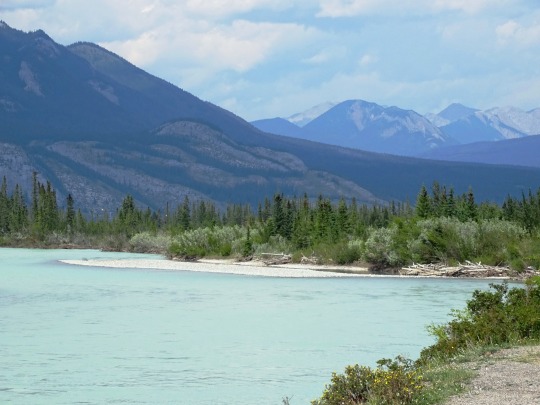
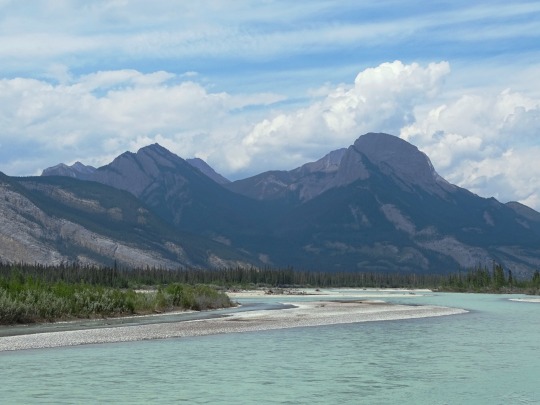
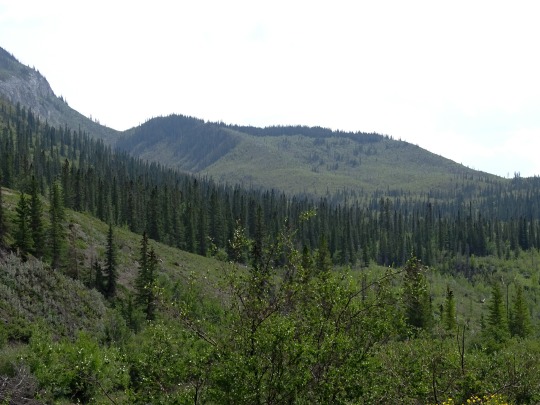
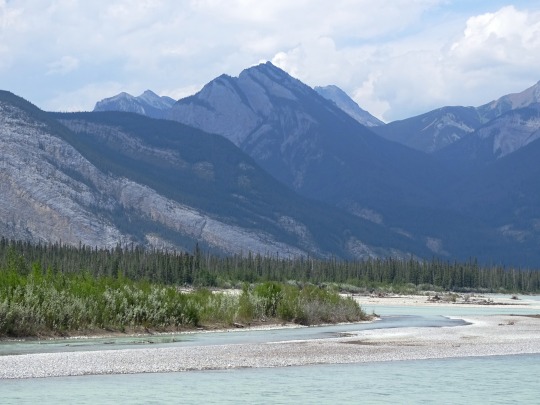
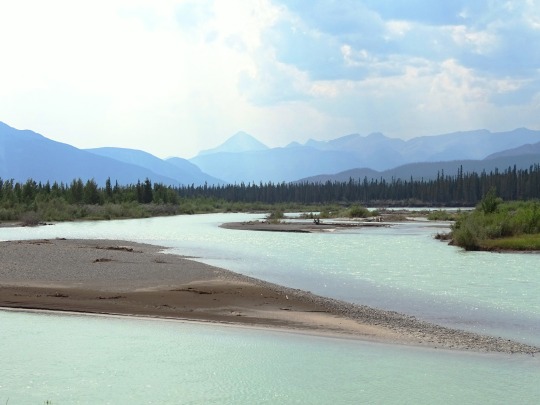

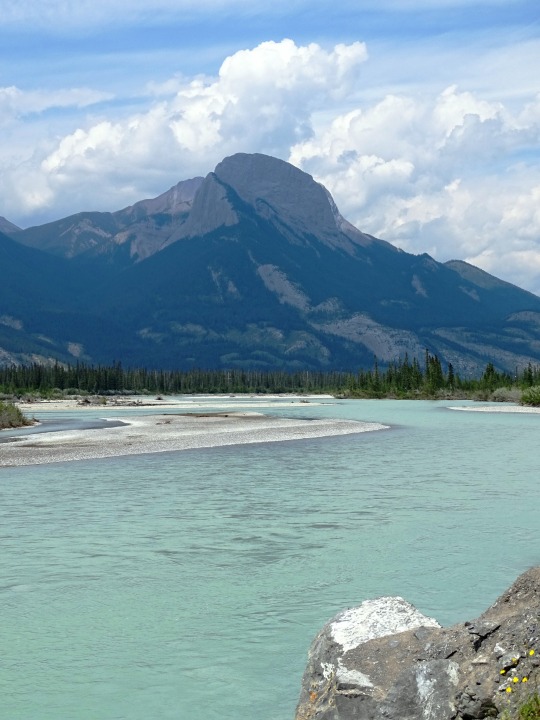
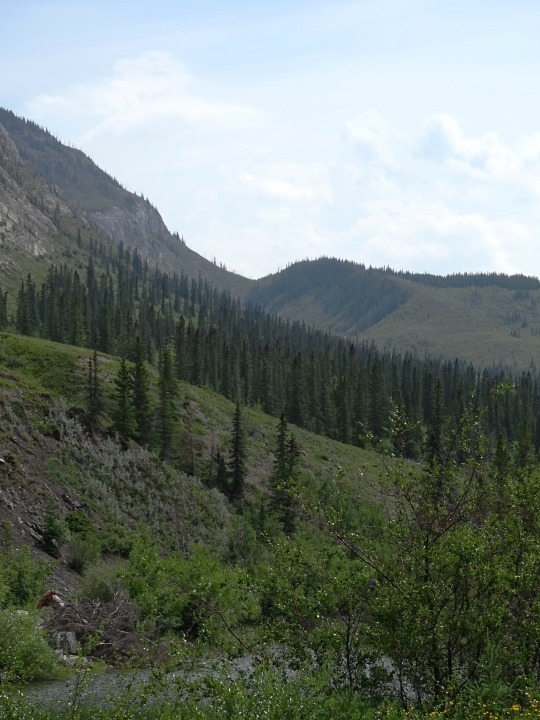
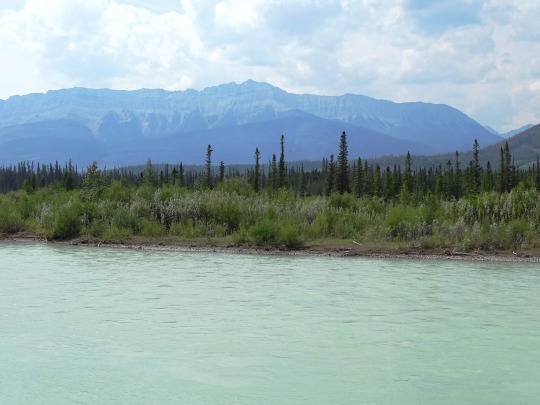
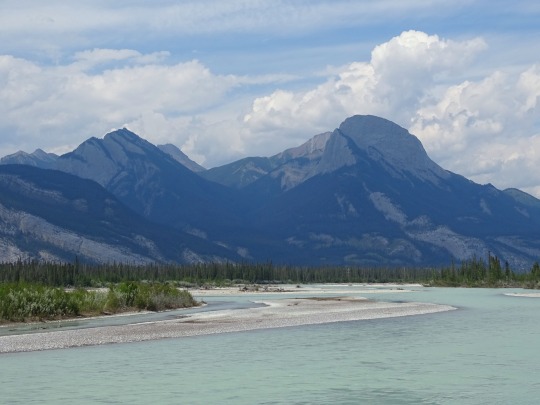
Jasper National Park, AB (No. 1)
Jasper National Park, in Alberta, Canada, is the largest national park within Alberta's Rocky Mountains, spanning 11,000 km2 (4,200 sq mi). It was established as Jasper Forest Park in 1907, renamed as a national park in 1930, and declared a UNESCO world heritage site in 1984. Its location is north of Banff National Park and west of Edmonton. The park contains the glaciers of the Columbia Icefield, springs, lakes, waterfalls and mountains.
The territory encompassed by what is now Jasper National Park has been inhabited since time immemorial by Nakoda, Cree, Secwépemc, and Dane-zaa peoples. Plainview projectile points have been found at the head of Jasper Lake, dating back to between 8000 and 7000 BCE. In the centuries between then and the establishment of the park, First Nations land use has fluctuated according to climatic variations over the long term, and according to cyclical patterns of ungulate population numbers, particularly elk, moose, mule deer, and occasionally caribou. Starting in the 1790s, Haudenosaunee and Nipissing hunters and trappers moved in large numbers to the eastern side of the Rocky Mountains, around the headwaters of the Athabasca and Smoky Rivers in particular, most of them employed by the North West Company. By the time David Thompson crossed the Athabasca Pass in 1810, led by a Haudenosaunee guide named Thomas, there were hundreds of Haudenosaunee and Anishinaabe people living in the region. When Mary Schäffer Warren became the first settler to visit Maligne Lake—known by the Nakoda as Chaba Imne—in 1908, she did so by following a map given to her by Samson Beaver, a Nakoda guide and hunter.
Source: Wikipedia
#Roche Ronde#Alberta#Rocky Mountains#Northern Rockies#Alberta's Rockies#travel#original photography#vacation#tourist attraction#landmark#landscape#summer 2023#Canada#woods#forest#reflection#flora#nature#countryside#fir#pine#Jasper National Park#Athabasca River#UNESCO World Heritage Site#Yellowhead Highway#Pyramid Mountain
40 notes
·
View notes
Note
My dearest, tell me about your conlang scripts, please❣
Yeassss thank you beloved I will now kill for you <3 Ask me to kill for you.
I truly do not know how long this is going to end up but I'm just gonna go for it.
Montaran
Montaran is fauns' native language: it is alphasyllabic (rather than alphabetic), made up of character 'blocks' that are themselves composed of syllabic components. It's based off a mix of Korean and Sanskrit (mostly Brahmi script).

⬆️ "This is an example sentence" written in Montaran. Pronounced "Bavna mōskadatōk nin."
Components are arranged in blocks of three max, with spaces between words. It's written and read top to bottom, left to right. In three-component characters (called full blocks or complete characters), the arrangement of the components tells you where the syllabic emphasis is.

Here's the same sentence but with the components split up. The first word bavna has it's emphasis on the syllable na, and you can tell by reading because it's alone, as opposed to the other two components, which share space on the top of the block. The second word, Mōskadatōk, has its emphasis on the first and fourth syllables mō and da- the ones that are alone in their vertical placement. For partial blocks, like the last word nin, you can't tell emphasis by reading it.
Montaran is an abugida, which means its alphasyllabary is made up of consonant letters and small, diacritic-like additions that determine vowel sounds. Consonants can exist alone, but vowels must be connected to a consonant.


Where vowels are connected to a consonant can vary- usually there is a standardized method, but handwriting can alter it.
Montaran doesn't use any articles or particles, is written subject-verb-object (though the verb to be is considered an implied verb and therefore not actually written or spoken in sentences which would need it in other languages). Adjectives and adverbs are placed before what they alter.
Homonic
Homonic is humans' native language. It's alphabetic, made up mostly of vowels. The consonants are just 6 'base' ones, the sound of which changes with the inclusion of diacritics. It's based off of mostly English and Japanese.

⬆️ "This is an example sentence" written in Homonic. Pronounced "Goa ja ikaruth zonosh hfow."
Likewise I had more explanation for those weird phonetics but once again I am going to joker out so what the fuck ever. The r is a tapped r though.

Consonants base form is considered the default, while the diacritics change what sound it makes. The handakuten indicates a harder sound (P to B, F to V, L to tapped R), the tilde indicates a softer sound (hard G to Y, L to R, F to a sort of harder H that's not quite an english H), and the dakuten indicates a much softer, sometimes voiceless sound (P to W, F to H, T to Th). I should say now that I wrote out the phonetics of these in a way they make sense to me, so they might seem like nonsense to you. Because I don't understand international phonetic alphabet. But I digress. Vowels are never given diacritics.
Homonic uses both articles and particles, but particles are mostly used for action and subject indication. It's written subject-object-verb: Adjectives go after the noun they alter, but adverbs go before the verb. It's written left to right.
Paitarō
Paitarō is ipotanes' native language. It's an abugida, but unlike Montaran, consonants cannot exist alone. Instead, letters in their 'default' state are assigned the inherent vowel a, and all alterations from that indicate different vowel sounds. It's based mostly on Ge'ez and Eastern Cree.

⬆️ "This is an example sentence" written in Paitarō . Pronounced "Roujih myudae ba raisakō louhayka".
Paitarō has a bunch of different versions of verbs depending on context. They have general vs current forms, constant vs transient, beginning vs ending, and some verbs have a gladly vs reluctantly form. I gave examples, but this is my third time trying to edit this and I can't be assed to write it all out again without becoming the joker.

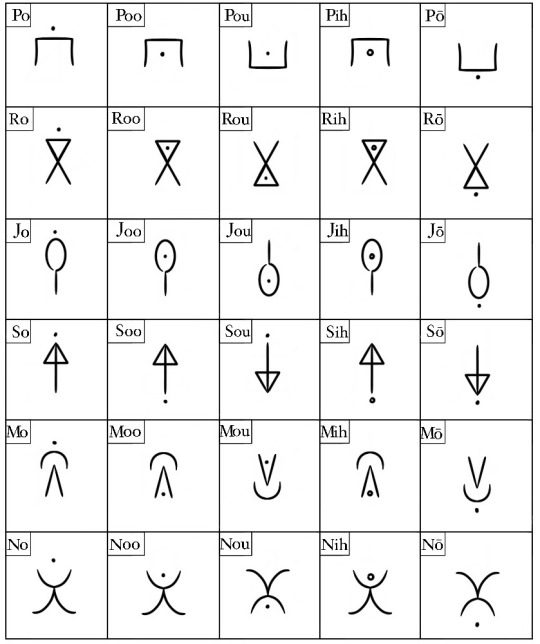

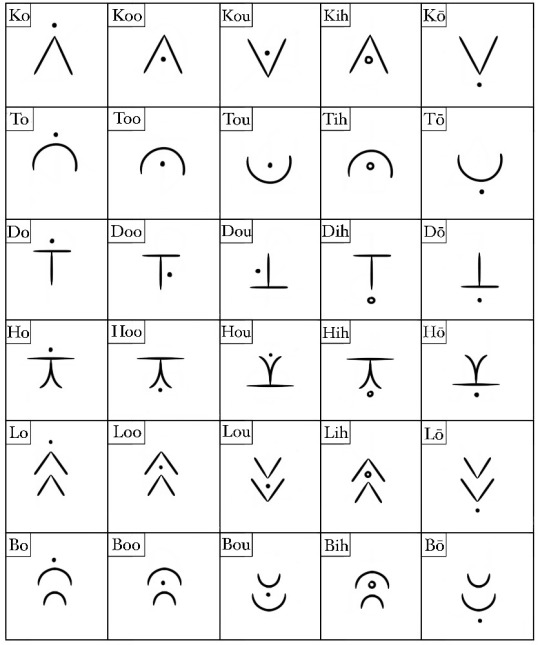
Rotation and diacritics determine the vowel sound of a letter. It's very consistent, so while it looks like there are 8 million letters, really there's just 12 that are altered slightly for different forms. A clockwise rotation 90 degrees will always result in the vowel ay, an macron will always result in the vowel i, etc.
It's written left to right, subject-verb-object, and uses no particles (but does use articles). It's also one of the harder languages to learn from an outside perspective, because many of the vowels (particularly o, oo, ou, and ō) sound similar to the untrained ear.
Arbor
Arbor is satyrs' native language. It's alphabetic, and has the largest alphabet of any language, with 42 letters (Paitarō beats it only if you consider all rotations and diacritics separate letters, which I don't). It's based mostly on Russian and Japanese.

⬆️ "This is an example sentence" written in Arbor. Pronounced "Shleya bouk dzyañen aotal voh."
It's written right to left, verb-subject-object. It doesn't use articles, but does use particles, which make up far more of the grammatical structure than of any other language. Particles indicate time, possession, location, direction, vocatives, pragmatics, formality, connectives, and conjunctions. For example, in the above sentence, the particle voh indicates certainty- what is being said is fact- not up for debate.
Formality particles are something that is mostly unique to Arbor: Homonic uses some, but they are loanwords from Arbor, and not used near as often. The only circumstance in which a satyr would not use formality particles is when speaking to children (or if the speaker is a child). Because of this, for an adult to speak without these particles is perceived as immature or patronizing or both. There are generally four 'levels' of respectful particles: familiar (for friends and family), peers (for acquaintances and strangers), respect (for superiors or elders), and higher status (for governmental or religious leaders). There are also degrading particles that are only used explicitly as insults, but are naturally not used in everyday life.

There are no true diacritics in Arbor, similar letters (like eh, ih, and uh, or v and fh) are considered distinct, not the same letter but altered).
Shotali
Shotali is nightlings' native language. It's syllabic, written calligraphically from top to bottom. It's made up of common humanoid phonemes as well as a clicking sound that is unique to their physiology. It's mostly based off of Khoisan and Vulcan.
⬆️ "This is an example sentence" written in Shotali. Pronounced "Sikosha taori niloth zhoi."


Here's the same sentence twice, one with the letters and other aspects of the sentence pointed out. The letters are designed to run into one another, where one letter ends another begins. Words are separated by a small open circle at the beginning and end to make clear the joint between the two.


It uses only two diacritics: a handakuten and a macron. In natural Shotali, they are used sparingly, but their usage has since expanded to allow for other sounds to be transcribed into Shotali. The macron traditionally changes just a few letters from an i vowel sound to an e (ri->re, ni->ne, li->le), but now can also be found to alter any letter with an i to an e, even if it was not originally allowed. The handakuten, in natural Shotali, indicates a click, made as part of the syllable alongside the voiced pronunciation, and is not actually considered a diacritic in this form. It's present only on hard consonants (k, v, d). These consonants can be written/spoken without the click and therefore without the handakuten, but only in very specific words or it is incorrect. Some words only define meaning by the presence or absence of this click- this makes things tricky for any other species trying to learn/speak Shotali.
Now, though, the handakuten is also placed as a diacritic on some other letters- not to indicate a click, but to harden the sound (Th to T, P to B, Zh to Z, J to hard G). These characters are not included in the base alphabet as they are considered adopted characters, meant to transcribe sounds from other languages- Shotali has a lot of technically allowed ways to write/speak that arent included in the 'official' alphabet.
Only d, j and th (or t with a handakuten) can exist as a consonantal sound without a vowel, considered a whole syllable by themselves in Shotali. It's written verb-object-subject, and uses no articles or particles. Adverbs and adjectives go before the noun or verb they alter.
Bonus: Chimerae's sign-morse
The chimerae, which live in the depths of the ocean and thus do not interact with any other humanoid species, converse with a form of sign language that utilizes their bioluminescent abilities. It is untranscribable, and so doesn't have a proper name. It's made up of similar signs as that of shallower merfolk: large, slow movements of the hands and caudal fin, but is additionally altered by light. Light carries meaning in: where on the body it is located, how quick the flash is, and what physical sign it accompanies.
Chimeraes have two distinct dialects of this language: a distant and close dialect, both used in conjunction with each other depending on context. Because detail gets much harder to see at distance, and the deep sea is big, the type of sign-morse used when far away from your conversation partner is different than that which is used when you are right next to each other. The former is vaguer, but more obvious, while the latter is more intricate and specific.
#ask#conlang#writing#<- trying to keep this so i can find it later teehee#THANKS BELOVED i sat with this for a bit but i shall now release her to the world. i am normal about fake languages and worldbuilding#also there is an ancient version of montaran that is not spoken but is used in tattoos and art. because it is aesthetic over function#also iarans (species of merfolk that can talk) have a language unique to them that is mostly used in song but it doesnt really...#..have a written alphabet or anything its very labile. likewise aesthetic (this time aural vs visual) over function#bcause they usually just sign to communicate with each other#AUGHC. i love making shit up. these were so fun to research for and put together#and they make the world feel a bit more fleshed out to know what their speaking sounds like?????#OH also the names for the diacritics are just what the closest analogue is called in the real world#they arent calling things macrons and tildes and dakutens. but thats basicslly what they are so thats what im calling them 👍#stupid as website broken ass website. post you asshole I'll kill you#.
22 notes
·
View notes
Text
Tonight we were lucky enough to take part in the Frog Census with Whittlesea Landcare!
We met one Lovely Friend and heard 4 different species all calling at once!
Creeee-cree-cree-cree (Southern Brown Tree Frog)
Waaaark pip-pip-pip-pip (Victorian Smooth Froglet)
Crk-crk-crk-crk-crk-crk (Eastern Common Froglet)
Tok tok tok tok (Striped Marsh Frog)
#frogs#frog census#amphibians#animals#tree frogs#southern brown tree frog#Victorian smooth froglet#eastern common froglet#striped marsh frog#video#animal video
175 notes
·
View notes
Text
Challenge, Alphabet of Crushes:
Pretty self explanatory, just list your biggest crushes of past and present to each letter. I tag @impossiblepeggy @little-bloodied-angel @geebs96 @airasora @thenamelessdoll @confettipetticoats @2009jorose @animagix101 @night130
A= Amalthea (The Last Unicorn)

B= Belle (Beauty and the Beast)

C= Christine (The Phantom of the Opera)

D= Dorian Grey (the picture of Dorian Grey)

E= Esmeralda (The Hunchback of Notre Dame)
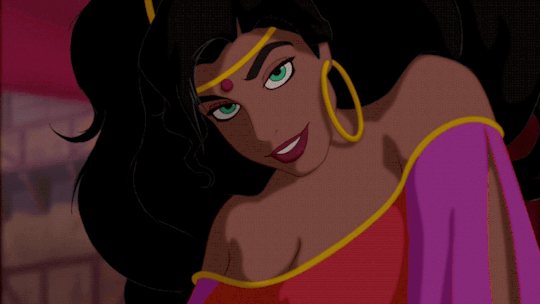
F= Frodo (The Lord of the Rings)

G= Granger, Hermione (Harry Potter) *Emma Waston I actually like for her, the character meh, but more roles lately make me really like Emma Waston more, just Hermione was my first role I really liked her*

H= Hemidall (Thor)
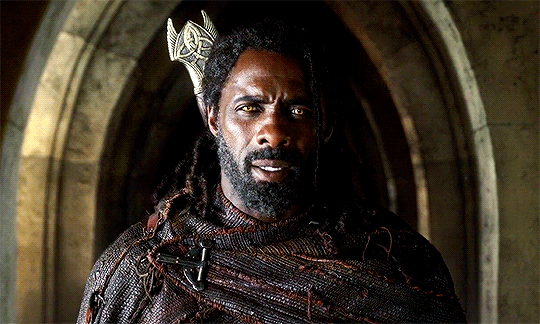
I= Inara (Firefly+Serenity)
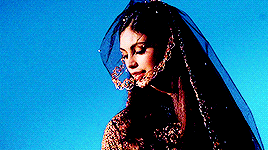
J= Jasmine (Aladdin)
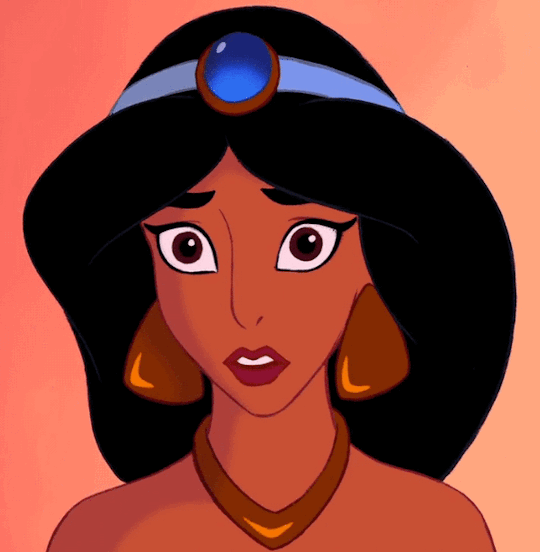
K= Kala (Sense8)

L= Loki (Marvel Cinematic Universe)

M= Merlin (BBC Merlin)
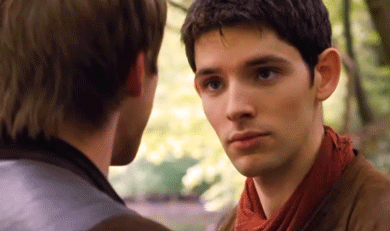
N= Nomi+ Amanita (Sense8) *I could not choose one as both are amazing*

O= Original Hex Girls (Scooby-Doo! and the Witch's Ghost) *mainly Thorn (center) and Luna(right side)*
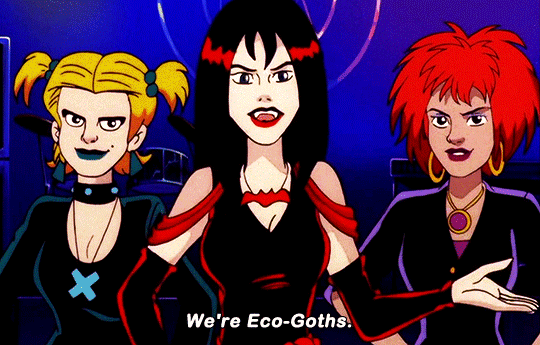
P= Padme (Star Wars)

Q= Queen of Wonderland, White Queen, or Mirana of Marmorea (Alice in Wonderland) *mostly like her for she is played by Anna Hathaway and BONUS looks like a live action Amalthea*
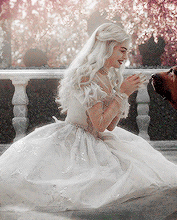
R= Rose (Titanic)

S= She-Hulk (1996’s Incredible Hulk: Animated Series) *Cree Summer too a crush*
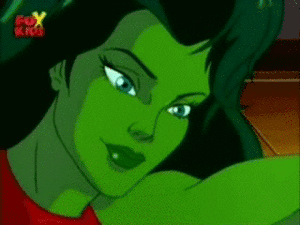
T= Tara (Buffy the Vampire Slayer)
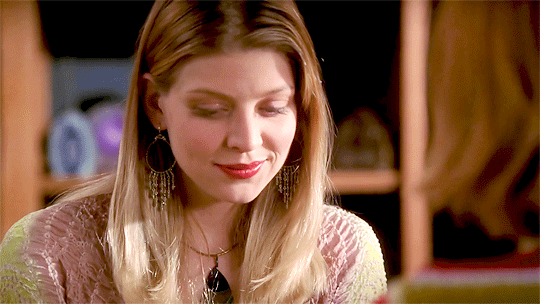
U= Underworld Persephone (Percy Jackson and the Lighting Thief)
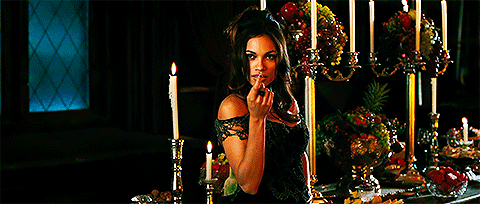
V= Vampire Mina (Bram Stoker Dracula) *mention honestly wanted to find a way to mention Winona Ryder as such a huge crush, plus Winona in red dress so beautiful*
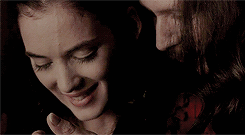
W= Wonder Woman (DC Comics, yet mostly Gal Gadot version)

X= Xavier, Charles (Marvel Comics, yet James McAvoy version, and yes I do not mind if someone needs a wheelchair)
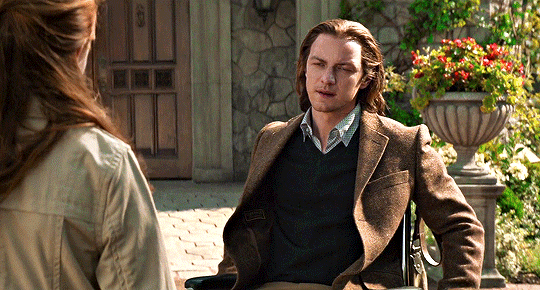
Y= Yum-Yum (The Thief and the Cobbler)

Z= Zoe (Firefly+Serenity) * and Wash, as both have such an adorable relationship*

It is very apparent to me I have a type in both women and men. As well, yes, I still have major crushes on the live action character's thespian. I mean dang I was not expecting such types, but one of my friends did observe I tend to like Jewish, Middle Eastern, French, and Indian women, and men twinks XD (often Untied Kingdom). Dyed hair not picky on gender though, as a good look all around.

#alphabet#get to know me#crushes#the last unicorn#beauty and the beast#the phantom of the opera#the picture of dorian gray#the hunchback of notre dame#the lord of the rings#harry potter#marvel cenimatic universe#firefly#serenity#aladdin#bbc merlin#sense8#Scooby-Doo! and the Witch's Ghost#star wars#alice in wonderland#titanic#1996’s Incredible Hulk: Animated Series#the incrediable hulk#cree summer#buffy the vampire slayer#Percy Jackson and the lighting thief#percy jackson#Bram Stoker Dracula#dracula
53 notes
·
View notes
Text
Monday, December 02, 2024 Canadian TV Listings (Times Eastern)
WHERE CAN I FIND THOSE PREMIERES?: SPONGEBOB & SANDY’S COUNTRY CHRISTMAS (Paramount+ Canada) 90 DAY: THE LAST RESORT (TLC Canada) 8:00pm LAST RESORT: BETWEEN THE SHEETS (TLC Canada) 10:00pm
WHAT IS NOT PREMIERING IN CANADA TONIGHT?: TMZ'S MERRY ELFIN' CHRISTMAS (FOX Feed) KIDS BAKING CHAMPIONSHIP: FROSTING THE SNOWMAN (Premiering on December 09 on Food Network Canada at 8:00pm)
NEW TO AMAZON PRIME CANADA/CBC GEM/CRAVE TV/DISNEY + STAR/NETFLIX CANADA:
AMAZON PRIME CANADA ANGRY BIRDS MYSTERY ISLAND … A HATCHLINGS ADVENTURE (Season 3) THE CROODS PRIME MONDAY NIGHT HOCKEY: CHICAGO VS. LEAFS (Live Event)
CRAVE TV WILFRED BUCK
DISNEY + STAR MICKEY AND THE VERY MANY CHRISTMASES
NETFLIX CANADA COLD CASE: WHO KILLED JONBENÉT RAMSEY THE CREATURE CASES: CHAPTER 4 THE FLASH
NBA BASKETBALL (SN/SN1) 7:30pm: Heat vs. Celtics (TSN4/TSN5) 8:00pm: Lakers vs. Timberwolves
WILD ROSE VETS (APTN) 8:00pm: Dr. Cori sees Trooper the dog over several days to figure out why he won't eat and each day the stakes get higher; after a tricky eye surgery on Ben the dog, Dr. Allison heads to the bush with her mom for a dog sledding adventure.
NFL FOOTBALL (TSN/TSN3) 8:15pm: Browns vs. Broncos
HORSE WARRIORS (APTN) 8:30pm: In Blackfoot Idaho, Logan and her team get lost and risk missing their race. Garren flirts with disaster when he pushes himself to be brave on the track.
OUTLANDER (W Network) 9:00pm (SEASON PREMIERE): Claire and Ian arrive in Philadelphia to help the ailing Henry Grey; Roger and Buck receive an unexpected clue in their search for Jemmy.
WILFRED BUCK (Crave) 9:00pm: An elderly member of the indigenous Cree people of Canada is the spiritual guide of a journey that, like its charismatic protagonist, moves between past and present, and between Earth and the stars, to overcome the ghosts of colonisation.
THE TRAITORS CANADA (CTV) 10:00pm: As the guests put their strategies in place ahead of the Fire of Truth, the players proceed to their final mission and attempt to dig up some last minute additions to the prize pot.
TOP CHEF CANADA (Food Network Canada) 10:00pm (SEASON FINALE)
ACTING GOOD (CTV Comedy) 10:30pm: Paul's bottomless lie-hole leads to an unexpected reunion with his dad, while Jo feels smothered by Logan's love.
#cdntv#cancon#canadian tv#canadian tv listings#wild rose vets#horse warriors#the traitors canada#top chef canada#acting good#nba basketball#nfl football
2 notes
·
View notes
Text
Friendly reminder on this Juneteenth, many first nations peoples kept slaves. We are not exempt.
My degree is Eastern Woodlands and I'm not well versed in other nations, but the Iroquois often raided other nations for slaves and children during battles.
Children were usually adopted as replacements for those lost and raised as Mohawks (or one of the other 4) And the slaves were adopted in time. After a while, the prisoners were encouraged to marry into the tribe and become full members. They almost never remained in slavery for more than a few years.
Mohawks' brutality at times was universally feared. Cree bedtime stories called us boogeymen, we were cannibals on occasion, we started wars, and we kept slaves.
So when you're balls deep in the "Noble Savage" stereotype, remember that we are no better than anyone else and stow your anti-blackness. Chances are, if your ancestors weren't slaves themselves, they were slaveholders.
And at least one of them has eaten a human heart.
#history lesson#Iroquois slavery#precontact war#only come at me with history details#i have a degree in this shit#I'm not going to argue
4 notes
·
View notes
Text
I got rez dogs keeping me company at work today
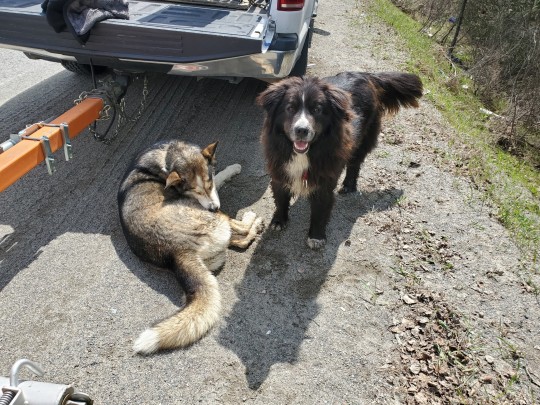
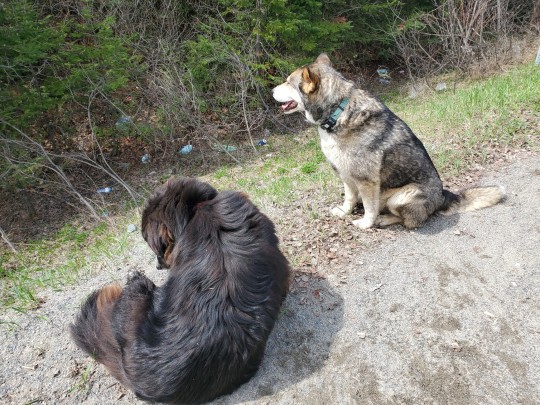
My boss drove by and said I should put little neon vests on them lmao
#lou#louspictures#precious babies#natives leave their dogs unleashed so it happens fairly often that i get four-legged friends#so much that now the only eastern cree words i know beside 'wachiya' are dog commands lol#so if im ever stranded and find a native camp all i got is 'hello! come here! sit! good dog!' lmao#(theyre technically not rez dogs cuz they have collars but you know)
9 notes
·
View notes
Note
Why did the Cree has so much beef with other people
Depends on the time period dvehdtv.
Tribes we were allied with: Ojibwe & Salteaux (the besties <3), Blackfoot (its complicated), Algonquin, Assiniboin, Flathead Salish (we often got our horses from them), Haudenosaunee confederacy, Arapaho, Maliseet, Mandan, Abenaki
Tribes we were enemies with: Blackfoot confederacy, Inuit, Oceti Sakowin (namely the Dakota), Dene, Danezaa, Gros Ventres, Kootenay, & Shoshone, Mi'kmaq, Haudenosaunee confederacy (it's also complicated)
Like other peoples and wars in history, the allyship depended on the time period and circumstances. Some of the reasons why we might've been enemies was for scarcity of food, territory (but it's not in the same way Europeans would fight over land exactly, because our worldviews about land are different), interpersonal slights or interactions, access to horses, allying ourselves with certain tribes (like "an enemy of my friend is also my enemy" kind of thing, so we became enemies by association), and so on. At one point in history we might've been allies with a tribe & then later enemies with them. It really depends.
When the British met with Crees in the late 17th century, we were actually allies with the Blackfoot at the time, & we were warring together against the Shoshone. Later we were kind of off-and-on with the Blackfoot, but one of the reasons we were enemies later (especially in the 1800s), was because of the growing scareceness of food and encroaching on enemy territory to try get it. Blackfoot-Cree relations largely improved when Blackfoot Chief Crowfoot adopted Poundmaker (Cree) as his son, & he's the only reason Poundmaker's hair wasn't forcefully cut while he was in prison. Poundmaker also met with Sitting Bull at some point, and because Sitting Bull later became friends with Crowfoot, Lakota-Cree relations would've likely improved as well.
Some bands or subsections of Crees might not have been involved in certain conflicts as others due to culture and location or situation. Like, the Woodland Crees weren't so involved with the (Plains) Cree/Blackfoot wars or conflicts, even though they were allied with the Plains Crees & were our woodland cousins, because they weren't as nomadic. The conflicts with Inuit also pertained mostly to more Northern & Eastern suitated Crees, & the Innu. Innu being enemies with the Haudenosaunee at one point is I believe when the Plains Crees were actually allies with them (we liked getting wild rice & corn from them via the Ojibwe). & even when we were enemies, it was still pretty common to stop fighting and to invite even enemy tribes over so they could join in on ceremonies & religious events (& this wasn't exclusive to Crees, the Lakota also did this with the Pawnee)
There's also tribes that we sometimes ran into but didn't have necessarily bad or good relationships with, & we were just kind of neutral with each other, maybe sometimes traded. One example would be the Kiowa, who we ran into on occasion, but didn't interact with too much.
It's hard to summarize all here but yeah... it depends on the time period, place, tribe, band/subsections, and so on.
#to this day Blackfoot and Crees still roast each other rvsgrvtcs#anonymous#this has been a very basic introduction to Cree war history 101
107 notes
·
View notes
Note
hi cat! do you have any suggestions for a fc (woc, preferably) who could play a pirate character? thank you so much! 💛
Jessica Parker Kennedy (Black Sails) Black Canadian / Ashkenazi Jewish.
Son Ye Jin (The Pirates) Korean.
Han Hyo Joo (The Pirates: The Last Royal Treasure) Korean.
Ilia Isorelýs Paulino (One Piece) Dominican.
Haven't watched the show but they were on a boat in some gifs:
Amita Suman (Shadow and Bone) Bhojpuri Nepalese.
Anna Leong Brophy (Shadow and Bone) Irish, Chinese, and Kadazan.
Jessie Mei Li (Shadow and Bone) Hongkonger / English - is a gender non-conforming woman who uses she/they.
And not pirate specific media but:
Adwoa Aboah (Willow) Ghanaian / English.
Erin Kellyman (Willow) Afro Jamaican / Irish - is a lesbian.
Cara Gee (Strange Empire) Ojibwe.
Devery Jacobs (Blood Quantum) Mohawk - is queer.
Claudia Kim (Marco Polo) Korean.
Ming-Na Wen (The Mandalorian) Macanese, Chinese, Malaysian.
Danai Gurira (The Walking Dead) Shona Zimbabwean.
Zoë Robins (The Wheel of Time) Nigerian.
Madeleine Madden (The Wheel of Time) Eastern Arrernte, Arrernte, Kalkadoon, White / Gadigal and Bundjalung.
Sarita Choudhury (The Green Knight) Bengali Indian / English.
Tao Okamoto (Westworld) Japanese.
Ellora Torchia (Beowulf: Return to the Shieldlands) Indian / Italian.
Dianne Doan (Vikings) Vietnamese, 1/8 Chinese.
Anya Chalotra (The Witcher) Kashmiri Indian / English.
Anna Shaffer (The Witcher) Black and White South African Jewish.
Sophia Brown (The Witcher: Blood Origin) Black British.
Jessica Matten (Frontier) Métis, Saulteaux-Cree, Chinese, British.
Kylie Bunbury (Tut) Afro Guyanese / Swedish, as well as Polish, English, and German.
Malese Jow (The Shannara Chronicles) Chinese / English, Scottish, Cherokee.
Chu Ja Hyun (Arthdal Chronicles) Korean.
Kim Ok Bin (Arthdal Chronicles) Korean.
Hope these suggestions help!
13 notes
·
View notes
Note
Hi riley I hope your day is awesome! I'm planning to commission a rather large pack from someone both to help them and also the indigenous community with resources. Do you have a list of Indigenous faces that you'd both love to have over 1k+ pack wise and also has the material to achieve that?
ok sooooo....... i'm loving this!!!! love to see indigenous faces everywhere. so, besides kiowa gordon in dark winds (what i just answered last) here are some faces i think deserve way more (and tbh i don't know if all can reach 1k but they deserve to be mentioned regardless!!!). i also put '!!!' next to my faves, but seriously all of these are perfect choices! the rpc would be so grateful. and and AND these are not all of my favorites, just those that don't have as many resources compared to other "popular" indigenous faces.
grace dove (secwepemc)
alaqua cox (menominee, mohican)
willow allen (inuit) !!!
anna lambe (inuit)
cara gee (ojibwe)
tanaya beatty (da'naxda'xw, himalayan)
morgan holmstrom (metis of cree, filipino)
martin sensmeier (tlingit, koyukon, eyak, white) !!!
luciane buchanan (tongan, white)
jana schmieding (lakota sioux) !!!
paulina alexis (nakota sioux) !!!
lily gladstone (blackfoot, nez perce, white)
ashley callingbull (cree) !!!
ellyn jade (ojibwe, taino, afro-jamaican, white) + two-spirit
dove clarke (blackfoot, black) + nonbinary
madeleine madden (eastern arrernte, kalkadoon, cadigal, bundjalung, white)
alyssa wapanatâhk (plains cree, white)
blu hunt (oglala lakota, apache, white) !!!
19 notes
·
View notes
Text










Lesser Slave Lake, AB (No. 3)
Due to its location on a major fly-way for migrating birds, Lesser Slave Lake is popular with birders. The nearby Lesser Slave Lake Provincial Park has lakeside camping facilities located along sand beaches, with some rocky beaches as well. Fishing is popular and legal. The entire north shore of the lake is protected, other reserves being Hilliard's Bay Provincial Park, Lesser Slave Lake Wildland and Grouard Trail Park Reserve.
Highway 2 and the Canadian National Railway follow the southern shore of the lake, and the Bicentennial Highway has its southernmost point at eastern end of the lake.
A number of Indian reserves are established at the shores of the lake:
Kapawe'no First Nations Lands 150, 230 and 231 of the Kapawe'no First Nation,
Sucker Creek 150a of the Sucker Creek Cree First Nation
Drift Pile River 150 of the Driftpile First Nation
Swan River 150e of the Swan River First Nation
Sawridge 150g and h Sawridge Band
Source: Wikipedia
#Devonshire beach#Lesser Slave Lake#Slave Lake#Upper Athabasca#travel#original photography#vacation#Alberta#Canada#summer 2024#nature#flora#lake shore#beach#tourist attraction#landmark#cityscape#a lot of inscets#fauna#small town#northern Alberta
4 notes
·
View notes
Text
Another Pretendian.
Buffie Sainte-Marie is not a first nations or even just mixed race person anymore. She has no ties to Canada having for years claimed to be from somewhere in Saskatchewan. They found her birth certificate in Massachusetts. She has sisters and brothers who for years got threatening letters form lawyers to keep quiet. Nice person eh?
She is of Italian ancestry on both sides.
She got her start as a folk singer in New York City during the early hippie days. It suited her brand to claim to be first a Mikmaq Indian from eastern Canada, then an Algonquin from central Canada, finally a Cree from Western Canada. Back in the post war era there were many first nations children "freed from poverty" by forcibly adopting them into white families. True dat, but since there was so much smoke and confusion almost impossible to trace.
And living in New England, Canada is a distant place of mystery. It is where the snow storms come from.
Eventually somebody mentioned on a tour or something that she may have come from Piapot Saskatchewan as a girl was taken from there years ago. She visited and was formally adopted by a Piapot Cree family. That part is true and her only legitimate claim. My Mother was from Piapot Saskatchewan, but of Scottish and Irish ancestry by way of Nova Scotia. My mom had a better claim than ol' Buffy there as at least she was from the right area.
I actually wonder how being born in the USA with an American Passport she managed to get so many honors in Canada as if she were a citizen.
Part of me can sympathize it may have been an almost innocent claim at first, like saying you are descended from royalty or something as a stage name or persona. But as she grew more prominent the story got more important. It eventually defined her. She is not that great a singer or a songwriter. But telling the story of "her people" got her an audience.
I wondered with all the mixing and the centuries if I had a bit of first nations blood in me from the Maritime Provinces. Apparently it only takes a distant great-great-grandparent to get legitimized. But 23 and me shows no I don't. I am as white and European as anyone could be going back a few thousand years. Back then there were no races or countries for that matter. So maybe people who want to make such claims should spit in a tube and see what they get.
It would bring some clarity to the issue.
Another one bites the dust.
7 notes
·
View notes